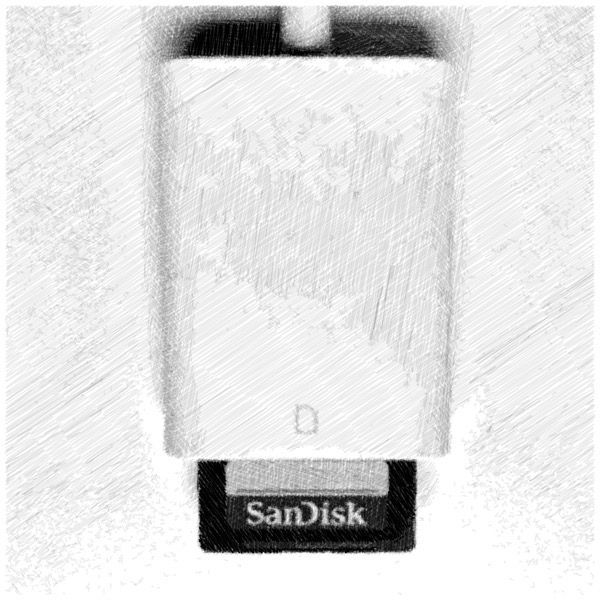It just doesn’t work: ExFAT SDs not showing in iOS Files app.

SDs work great as mini flash drives for the iOS through the iPad OS Files app. Well, they did—until iOS 13. If your SD is formatted in the MS ExFAT format, it may have stopped showing in Files. Remain calm: Your files are likely all still there. This article will show you how to get your iDevice seeing those files again and how to format an SD card in the future to avoid the issue.
So why on earth would I format a SD card in ExFAT in the first place? At the place I was working, we were half-Mac/half-PC. My 512Gb Sandisk Extreme Pro SD card needed to be in a format that all machines could read and needed to hold video files that were bigger than 4Gb. ExFAT was the only format that could do that. Recently I tried to open this card on my iPad Pro. When I went to the Files app: Nada. Didn’t show. Tried it on my iPhone: Zilch. Wasn’t there. Curiously, I put the card in my aging iMac and it popped up just fine.
The problem: iOS doesn’t eject ExFAT-formatted disks properly.
There seems to be a bug in iOS and iPad OS that doesn’t eject ExFAT-formatted SD cards correctly. So, the next time you plug the SD into an iDevice, it may not show.
How to get an ExFAT-formatted card to read again in iOS.
It’s simple, if you have a Mac:
- Plug the SD card into your Mac (either in the slot or an attached reader).
- Once it mounts, drag it to the Trash (or Control-Click and choose Eject).
Mac will see the card and properly eject it so it’s readable in iOS again. (I don’t have a PC to try this with, but I’m betting it works by mounting and ejecting on PC too.) The downside is that you’ll have to do this every time you remove the SD card from the iOS reader attachment in order to get it to mount again.
So how should you format an SD Card as an iOS drive?
If you have a Mac, you can use the Disk Utility app to format an SD card in various formats. Your choices are:
- MS FAT 32 This is the most common format for drives. Most digital cameras use it when they format SD Cards. The big advantage is that it’s readable by almost any computer, and works great with iOS 13. The disadvantage is that individual files can’t be larger than 4Gb. If you shoot 4K video or long clips, you can run into this issue. (It’s not a good idea to use and SD as both a camera card and a drive: The two may not gel well.)
MS ExFATThis is the upgrade to FAT 32 and can hold larger files. The problem is that iOS 13 and iPad OS don’t currently eject ExFAT-formatted disks properly.- Apple File System (APFS) This new format is used by Mac 10.13 or later. My Mac is nine-years-old and can’t run the current OS, so I haven’t been able to test compatibility with iOS 13.
- Mac OS Extended This is the previous generation of Mac file formatting and works fine with iOS 13.
Neither Mac nor iOS read MS NTFS formatted drives at all. The better bet is to use one of the three formats above. If have no need to make the SD MS-compatible, I’d use a Mac format.
It’s likely Apple will find a fix for the eject issue, but a recent visit to Apple Support indicates this is not an identified issue.
